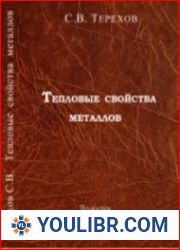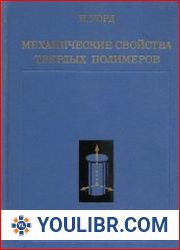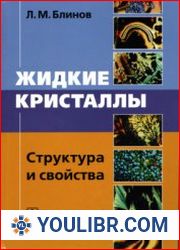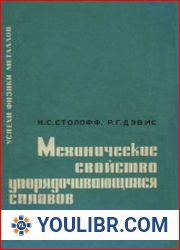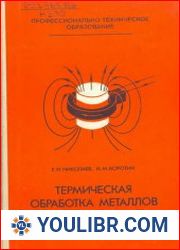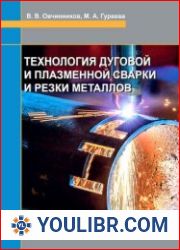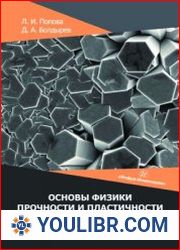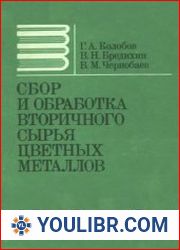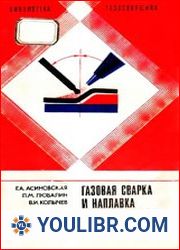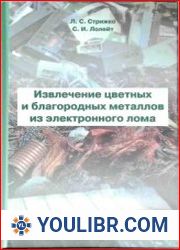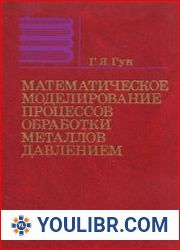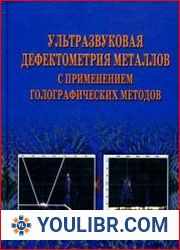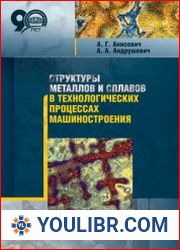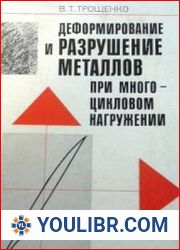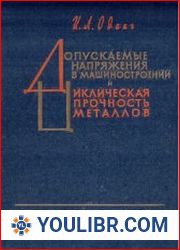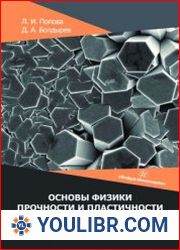
BOOKS - TECHNICAL SCIENCES - Тепловые свойства металлов

Тепловые свойства металлов
One of the complex problems of thermodynamics of condensed media is the theoretical calculation of thermophysical properties, in particular, temperature dependences of heat capacities and coefficients of linear thermal expansion. For example, the theory of heat capacity is based on the well-known phonon models of Einstein and Debye (as well as their modifications), but they cannot explain a number of features: the increase in heat capacity with increasing temperature for many solids, describe jumps on curves (structural transitions), peaks and pits (aggregate, magnetic and other transformations).
PDF-Datei herunterladen Thermische Eigenschaften von Metallen Scarica il file pdf Proprietà termiche metalli скачать файл PDF Тепловые свойства металлов تنزيل ملف pdf الخصائص الحرارية للمعادن descargar archivo pdf Propiedades térmicas de los metales download pdf file Тепловые свойства металлов PDFファイルをダウンロード 金属の熱特性 להוריד קובץ PDF תכונות תרמיות של מתכות pobierz plik pdf Właściwości termiczne metali pdf dosyasını indir Metallerin termal özellikleri télécharger le fichier pdf Propriétés thermiques des métaux download pdf file descarregar ficheiro pdf Propriedades térmicas de metais pdf 파일 다운로드 下载 pdf 文件 金屬的熱特性
Um dos problemas complexos da termodinâmica dos ambientes condensados é o cálculo teórico das propriedades termofísicas, especialmente as dependências térmicas das térmicas e os coeficientes de expansão térmica linear. Por exemplo, a teoria da capacidade térmica baseia-se nos bem conhecidos modelos fonônicos de Einstein e Debai (bem como as suas modificações), mas eles não podem explicar uma variedade de características: aumento da capacidade térmica, aumento da temperatura para muitos corpos sólidos, descrição de saltos para curvas (transições estruturais), picos e buracos (transformações magnéticas, magnéticas, etc).
L'un des problèmes complexes de la thermodynamique des milieux condensés est le calcul théorique des propriétés thermophysiques, en particulier les dépendances thermiques des capacités thermiques et les coefficients de dilatation thermique linéaire. Par exemple, la théorie de la capacité thermique repose sur les modèles phononiques bien connus d'Einstein et de Debay (ainsi que leurs modifications), mais ils ne peuvent pas expliquer un certain nombre de caractéristiques : la croissance de la capacité thermique avec l'augmentation de la température pour de nombreux corps solides, décrire les sauts sur les courbes (transitions structurelles), les pics et les trous (agrégats, magnétiques, etc.).
Одной из сложных проблем термодинамики конденсированных сред является теоретический расчёт термофизических свойств, в частности, температурных зависимостей теплоёмкостей и коэффициентов линейного теплового расширения. Например, теория теплоёмкости базируется на хорошо известных фононных моделях Эйнштейна и Дебая (а также их модификациях), но они не могут объяснить целый ряд особенностей рост теплоёмкости с увеличением температуры для многих твёрдых тел, описать скачки на кривых (структурные переходы), пики и ямы (агрегатные, магнитные и др. превращения).
Uno de los problemas complejos de la termodinámica de los medios condensados es el cálculo teórico de las propiedades termofísicas, en particular las dependencias de temperatura de las capacidades térmicas y los coeficientes de expansión térmica lineal. Por ejemplo, la teoría de la capacidad térmica se basa en los conocidos modelos fonónicos de Einstein y Debye (así como sus modificaciones), pero no pueden explicar toda una serie de características: aumento de la capacidad térmica con aumento de temperatura para muchos sólidos, describir saltos en curvas (transiciones estructurales), picos y fosas (agregados, magnéticos, etc transformaciones).
Uno dei problemi più complessi della termodinamica degli ambienti condensati è il calcolo teorico delle proprietà termofisiche, in particolare delle dipendenze termiche degli impianti termici e dei fattori di espansione termica lineare. Ad esempio, la teoria della capacità termica si basa sui modelli fononici ben noti di Einstein e Debai (e le loro modifiche), ma non possono spiegare una serie di caratteristiche: l'aumento della capacità termica con l'aumento della temperatura per molti corpi solidi, descrivere i picchi delle curve (transizioni strutturali), i picchi e le buche (fusioni magnetiche, magnetiche e così via).
One of the complex problems of thermodynamics of condensed media is the theoretical calculation of thermophysical properties, in particular, temperature dependences of heat capacities and coefficients of linear thermal expansion. For example, the theory of heat capacity is based on the well-known phonon models of Einstein and Debye (as well as their modifications), but they cannot explain a number of features: the increase in heat capacity with increasing temperature for many solids, describe jumps on curves (structural transitions), peaks and pits (aggregate, magnetic and other transformations).
Eines der komplexen Probleme der Thermodynamik kondensierter Materie ist die theoretische Berechnung thermophysikalischer Eigenschaften, insbesondere der Temperaturabhängigkeiten von Wärmekapazitäten und linearen Wärmeausdehnungskoeffizienten. Zum Beispiel basiert die Theorie der Wärmekapazität auf den bekannten Phononenmodellen von Einstein und Debye (sowie deren Modifikationen), aber sie können eine Reihe von Merkmalen nicht erklären: das Wachstum der Wärmekapazität mit zunehmender Temperatur für viele Festkörper, beschreiben Sprünge in Kurven (strukturelle Übergänge), Spitzen und Gruben (Aggregat-, Magnet- und andere Transformationen).
Um dos problemas complexos da termodinâmica dos ambientes condensados é o cálculo teórico das propriedades termofísicas, especialmente as dependências térmicas das térmicas e os coeficientes de expansão térmica linear. Por exemplo, a teoria da capacidade térmica baseia-se nos bem conhecidos modelos fonônicos de Einstein e Debai (bem como as suas modificações), mas eles não podem explicar uma variedade de características: aumento da capacidade térmica, aumento da temperatura para muitos corpos sólidos, descrição de saltos para curvas (transições estruturais), picos e buracos (transformações magnéticas, magnéticas, etc).
L'un des problèmes complexes de la thermodynamique des milieux condensés est le calcul théorique des propriétés thermophysiques, en particulier les dépendances thermiques des capacités thermiques et les coefficients de dilatation thermique linéaire. Par exemple, la théorie de la capacité thermique repose sur les modèles phononiques bien connus d'Einstein et de Debay (ainsi que leurs modifications), mais ils ne peuvent pas expliquer un certain nombre de caractéristiques : la croissance de la capacité thermique avec l'augmentation de la température pour de nombreux corps solides, décrire les sauts sur les courbes (transitions structurelles), les pics et les trous (agrégats, magnétiques, etc.).
Одной из сложных проблем термодинамики конденсированных сред является теоретический расчёт термофизических свойств, в частности, температурных зависимостей теплоёмкостей и коэффициентов линейного теплового расширения. Например, теория теплоёмкости базируется на хорошо известных фононных моделях Эйнштейна и Дебая (а также их модификациях), но они не могут объяснить целый ряд особенностей рост теплоёмкости с увеличением температуры для многих твёрдых тел, описать скачки на кривых (структурные переходы), пики и ямы (агрегатные, магнитные и др. превращения).
Uno de los problemas complejos de la termodinámica de los medios condensados es el cálculo teórico de las propiedades termofísicas, en particular las dependencias de temperatura de las capacidades térmicas y los coeficientes de expansión térmica lineal. Por ejemplo, la teoría de la capacidad térmica se basa en los conocidos modelos fonónicos de Einstein y Debye (así como sus modificaciones), pero no pueden explicar toda una serie de características: aumento de la capacidad térmica con aumento de temperatura para muchos sólidos, describir saltos en curvas (transiciones estructurales), picos y fosas (agregados, magnéticos, etc transformaciones).
Uno dei problemi più complessi della termodinamica degli ambienti condensati è il calcolo teorico delle proprietà termofisiche, in particolare delle dipendenze termiche degli impianti termici e dei fattori di espansione termica lineare. Ad esempio, la teoria della capacità termica si basa sui modelli fononici ben noti di Einstein e Debai (e le loro modifiche), ma non possono spiegare una serie di caratteristiche: l'aumento della capacità termica con l'aumento della temperatura per molti corpi solidi, descrivere i picchi delle curve (transizioni strutturali), i picchi e le buche (fusioni magnetiche, magnetiche e così via).
One of the complex problems of thermodynamics of condensed media is the theoretical calculation of thermophysical properties, in particular, temperature dependences of heat capacities and coefficients of linear thermal expansion. For example, the theory of heat capacity is based on the well-known phonon models of Einstein and Debye (as well as their modifications), but they cannot explain a number of features: the increase in heat capacity with increasing temperature for many solids, describe jumps on curves (structural transitions), peaks and pits (aggregate, magnetic and other transformations).
Eines der komplexen Probleme der Thermodynamik kondensierter Materie ist die theoretische Berechnung thermophysikalischer Eigenschaften, insbesondere der Temperaturabhängigkeiten von Wärmekapazitäten und linearen Wärmeausdehnungskoeffizienten. Zum Beispiel basiert die Theorie der Wärmekapazität auf den bekannten Phononenmodellen von Einstein und Debye (sowie deren Modifikationen), aber sie können eine Reihe von Merkmalen nicht erklären: das Wachstum der Wärmekapazität mit zunehmender Temperatur für viele Festkörper, beschreiben Sprünge in Kurven (strukturelle Übergänge), Spitzen und Gruben (Aggregat-, Magnet- und andere Transformationen).







